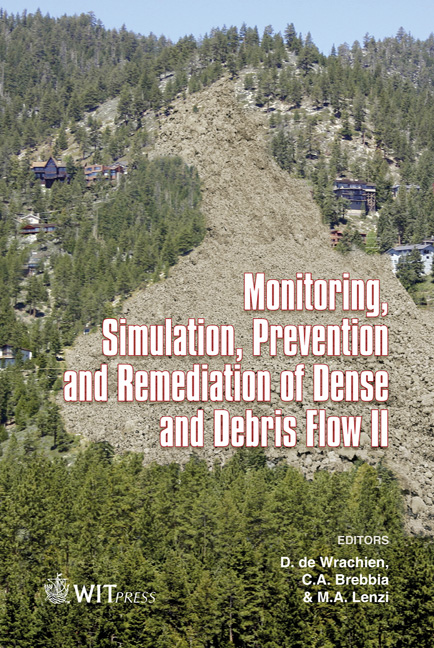Predicting Debris Flow Susceptible Areas Through GIS Modelling In Aparados Da Serra (Brazil)
Price
Free (open access)
Transaction
Volume
60
Pages
9
Page Range
89 - 97
Published
2008
Size
1145 kb
Paper DOI
10.2495/DEB080101
Copyright
WIT Press
Author(s)
A. J. Strieder, S. A. Buffon, T. F. P. de Quadros & H. R. Oliveira
Abstract
This paper aims to present the results of a GIS modelling to predict debris flow susceptible areas in the Aparados da Serra region (Brazil). The region shows a 1000 m high scarp located close to Atlantic Ocean in southern Brazil. The scarp is developed upon sandstones (Botucatu Fm.) and basalts and dacites (Serra Geral Fm.) of the Paraná Basin, after the break-up of the Gondwana Supercontinent and the opening of the South Atlantic Ocean. It is a topographic barrier to convective clouds migrating from ocean to the continent, mainly in spring and summer seasons. Geologic, geomorphologic, geotechnical mapping were conducted in order to enable GIS data modelling for debris flow in the region. The prediction of areas susceptible to debris flow along the scarp was based upon USPED algorithms. However, some changes were introduced into USPED algorithms in order to model debris flows in this region. The GIS modelling results distinguished susceptible areas for erosion and deposition of the debris, according the modified USPED procedures. These results were compared with a large debris flow event occurred in December 1995, and also recent small scale and localized debris flow events. All these observed debris flows show good correlation with predicted area of occurrence. Thus, it can be concluded that such GIS modelling can be applied to predict areas susceptible for erosion and deposition of debris related to concentrated convective storms. Keywords: debris flows susceptibility map, GIS modelling, USPED, erosion and deposition.
Keywords
debris flows susceptibility map, GIS modelling, USPED, erosion anddeposition.





